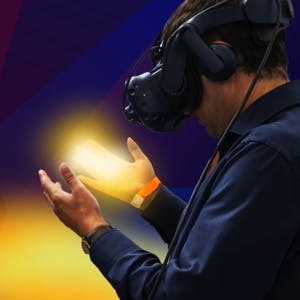- Home
- All updates
- EDGE Insights
- Industries
- Company Search
- My Watchlists (Beta)
EDGE Insights
Filter
EDGE Insights
The Extended Reality journey: Are we there yet?
Extended Reality
Dec 8, 2021
Older updates:
EDGE Insights
Notarize: The online remote notarization service
Residential PropTech
Dec 7, 2024
EDGE Insights
Ramp: The corporate card and expense management company
Security
Dec 7, 2024
EDGE Insights
Betterment: The investment app with automated investing, financial planning, and cash accounts
Retail Trading Infrastructure
Dec 6, 2024
EDGE Insights
NVIDIA Q3 FY2025 recap
Information Technology
Nov 26, 2024
EDGE Insights
RegTech
Capital Markets Tech
Nov 25, 2024
EDGE Insights
Ripple: The blockchain-based digital payment company
Cryptocurrencies
Nov 17, 2024
EDGE Insights
H2O.ai: The open-source AutoML platform
Machine Learning Infrastructure
Nov 17, 2024
EDGE Insights
PsiQuantum: A pioneer in advancing quantum computing hardware development
Quantum Computing
Nov 17, 2024
EDGE Insights
State of tech in Financial Services: How AI, blockchain, and biometrics are forging the future
Financial Services
Nov 13, 2024
EDGE Insights
Valimail: The email authentication and security solutions provider
Machine Learning Infrastructure
Nov 12, 2024

Extended Reality
By Chamath Muthukuda · Dec 8, 2021
The Extended Reality journey: Are we there yet?
Extended Reality, call it augmented reality/virtual reality/mixed reality technologies, has been the “next big thing” for almost a decade. The new normal in the aftermath of the pandemic has accelerated its journey, so could a retail e-commerce boom, the birth of the metaverse, and the continued interest in social and interactive gaming nudge it from this limbo state? There may be some light at the end of the tunnel, possibly marking the entry into a new reality, finally!
Large disruptors such as Magic Leap, Niantic, Matterport, and MindMaze have combined to raise more than USD 1.2 billion over July to November this year. The renewed interest is so sizable that Blippar, an AR creation and publishing platform, was resurrected from near bankruptcy as investors took a flier on it with a USD 5 million pre-seed round earlier this year. Moreover, incumbents such as Facebook and Microsoft have been active with a focus on the enterprise segment through the launch of VR platforms for remote work.
The regulatory environment for Extended Reality is relatively stable now as the federal and state laws on data privacy regulate data collection for development. Among the many reasons (such as expensive hardware and IP issues) holding back the industry, a strict stance and specific data laws posed onto this industry could impact its core functionalities (e.g. eye and motion tracking) negatively, and potentially curb its growth before it begins. In this introductory article to the Extended Reality industry, we take a closer look at the concept, components, use cases (beyond gaming), the current startup landscape, and different business models.
Contact us
Gain access to all industry hubs, market maps, research tools, and more
Get a demo
By using this site, you agree to allow SPEEDA Edge and our partners to use cookies for analytics and personalization. Visit our privacy policy for more information about our data collection practices.